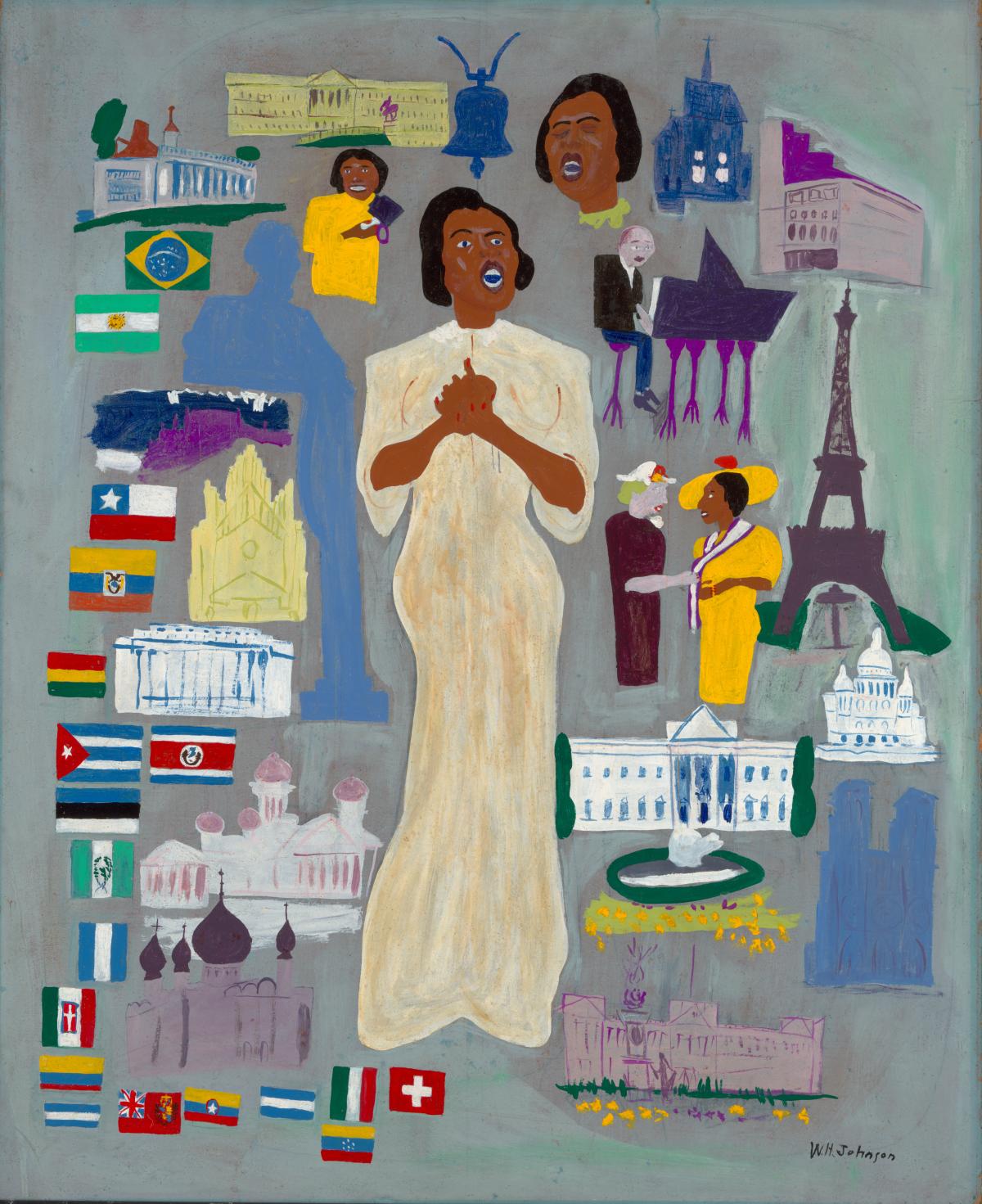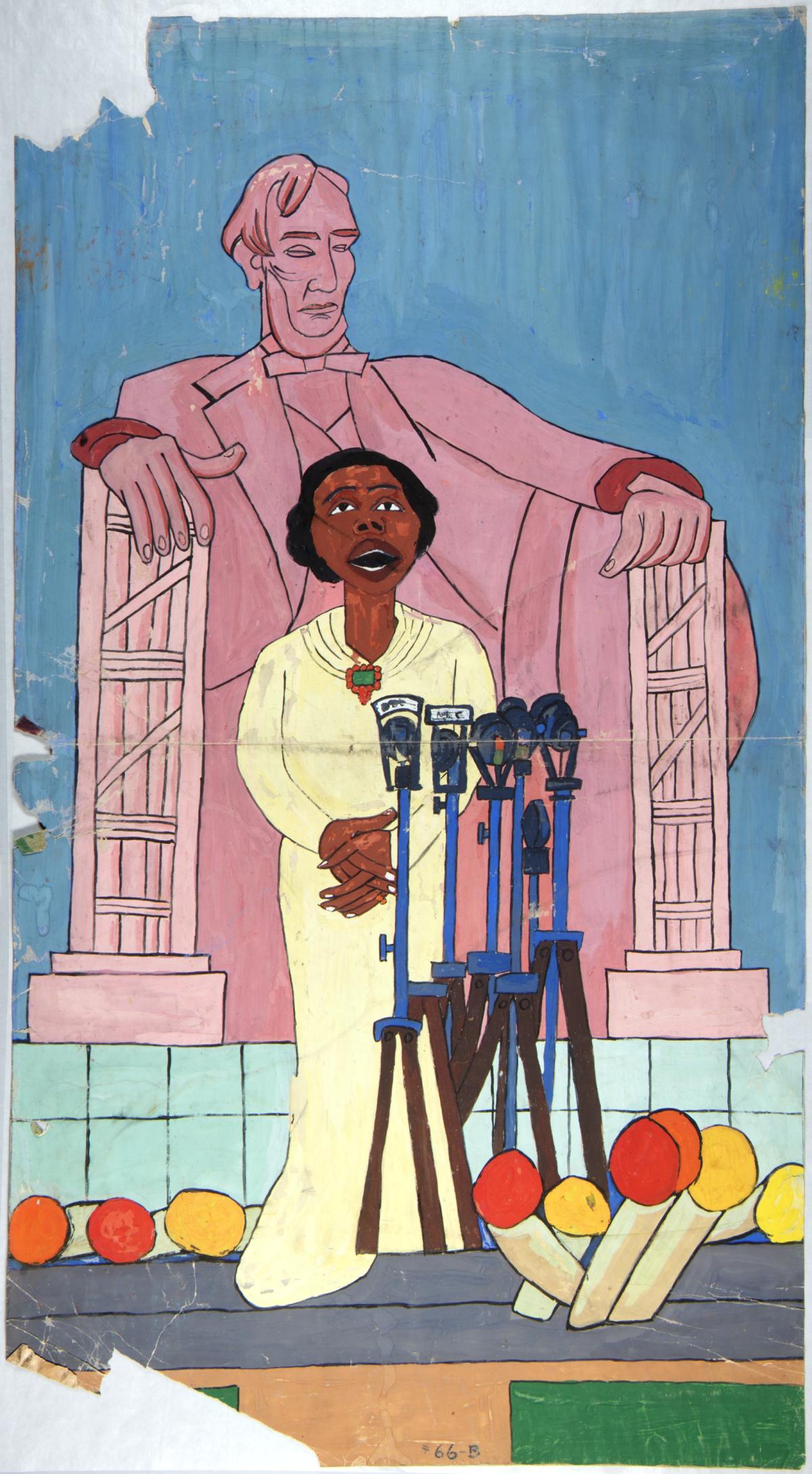
Marian Anderson was an internationally acclaimed singer renowned for her renditions of operatic arias, spirituals, and gospel music. As described by opera singer Denyce Graves, Anderson’s voice could “break your heart into a million pieces.” Born in Philadelphia in 1897, Anderson lived to be nearly 100 years old. Her legacy includes helping to break down racial barriers in the United States.
In 1939, Anderson was barred from performing at Constitution Hall in Washington, DC. The Daughters of the American Revolution, who owned the hall, would not allow a Black woman to sing there. First Lady Eleanor Roosevelt protested, as did the NAACP, the Brotherhood of Sleeping Car Porters, the American Federation of Labor, and other national organizations. Within weeks the Secretary of the Interior Harold Ickes invited Anderson to sing on the steps of the Lincoln Memorial, in front of the majestic sculpture. The symbolism was powerful.
She was initially reluctant: "I said yes, but the yes did not come easily or quickly. ... As I thought further, I could see that my significance as an individual was small in this affair. I had become, whether I liked it or not, a symbol, representing my people."
The historic concert on April 9, 1939, is magnificently captured in William H. Johnson’s bright and moving portrait of the artist, one of three paintings he made of Anderson. Attendance at the concert justified her decision. More than 75,000 people, most of them African American, came to hear her perform; millions more listened on the radio. The first words Anderson sang in her smoky contralto were, “My country ‘tis of thee, sweet land of liberty, of thee I sing.”
Johnson’s Marian Anderson #1 (1945) is a close-up of Anderson in front of the Lincoln Memorial, the singer almost nestled in the former president’s open arms. It’s filled with joyous yellows and a surprisingly pink monument of the sixteenth president. The stage microphones feel other-worldly, as if created by nature rather than man. In this painting, Anderson sings and Lincoln wholeheartedly approves.
A more intricate portrayal of the artist simply titled Marian Anderson (top image) was also painted in 1945 and features a full portrait of the singer at the Lincoln Memorial at its center. A blue outline of Lincoln appears to Anderson’s right, while she stands with First Lady Eleanor Roosevelt at her left. The Liberty Bell silently rings over her head. In this rich and complex narrative, Anderson is also surrounded by people and places that were important in her formative years. You can see the Eiffel Tower in Paris, St. Basil's Cathedral in Moscow, St. Peter's in Rome, among other monuments. Johnson also portrayed Anderson's long-time accompanist and vocal coach Kosti Vehanen seated at the piano.
This painting is included in the exhibition, Fighters for Freedom: William H. Johnson Picturing Justice, where Anderson is featured alongside other fighters including Harriet Tubman, George Washington Carver, and Mahatma Gandhi. Marian Anderson’s fight for freedom was based on her singing and her actions; her voice a deep current of hope that could break your heart into a million pieces while helping a fractured nation to heal at the same time.
Hear more about how Marian Anderson used her stature to break down color barriers in the field of the arts from Samir Meghelli, senior curator at the Smithsonian’s Anacostia Community Museum.



















